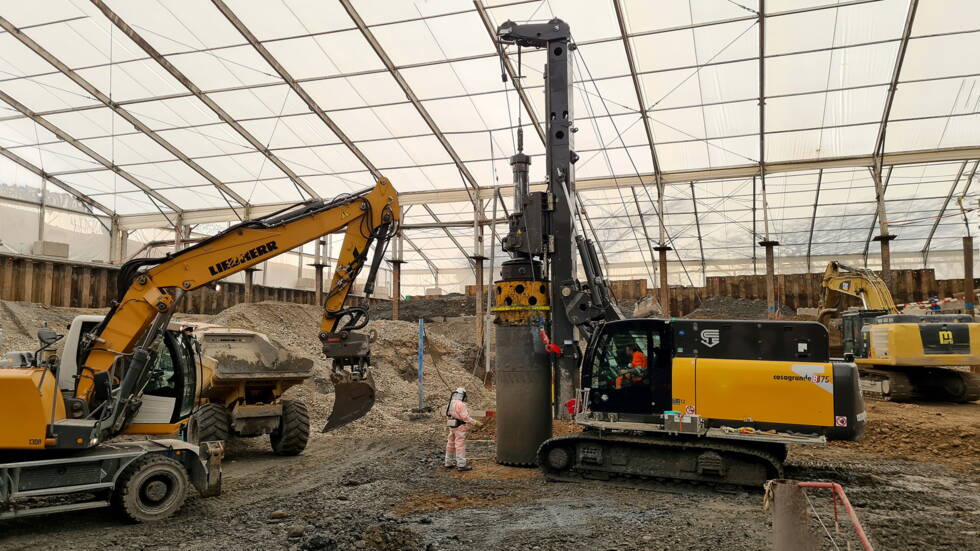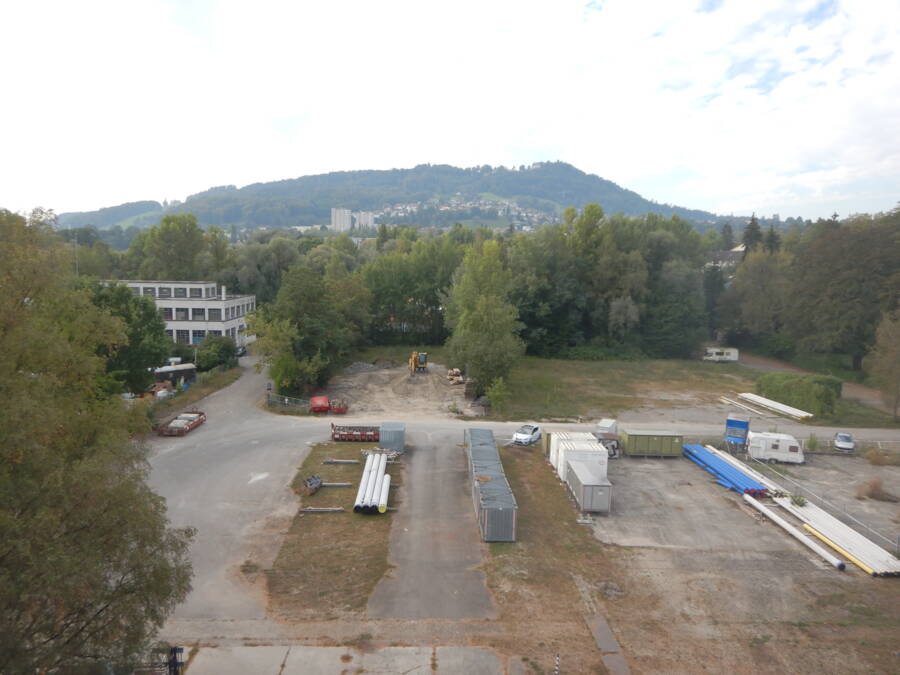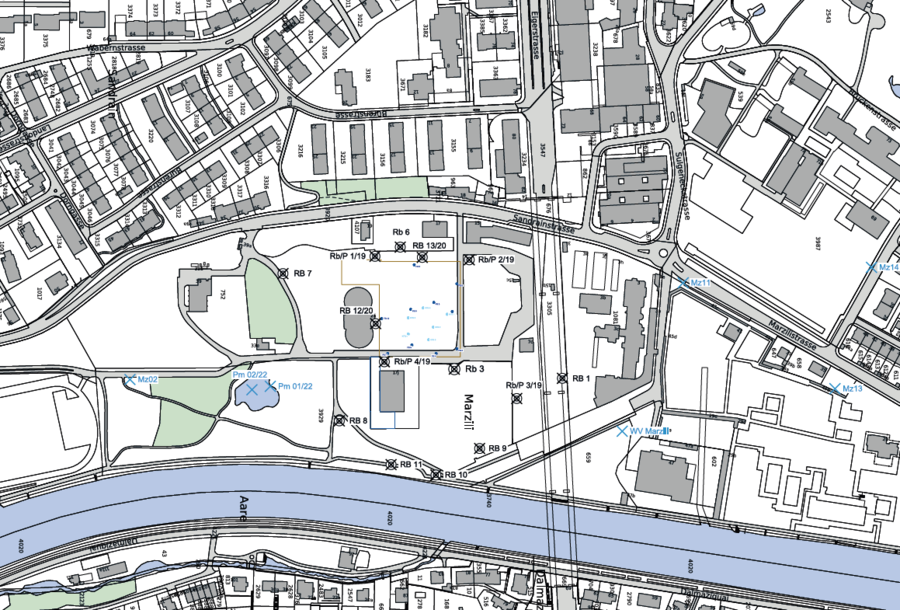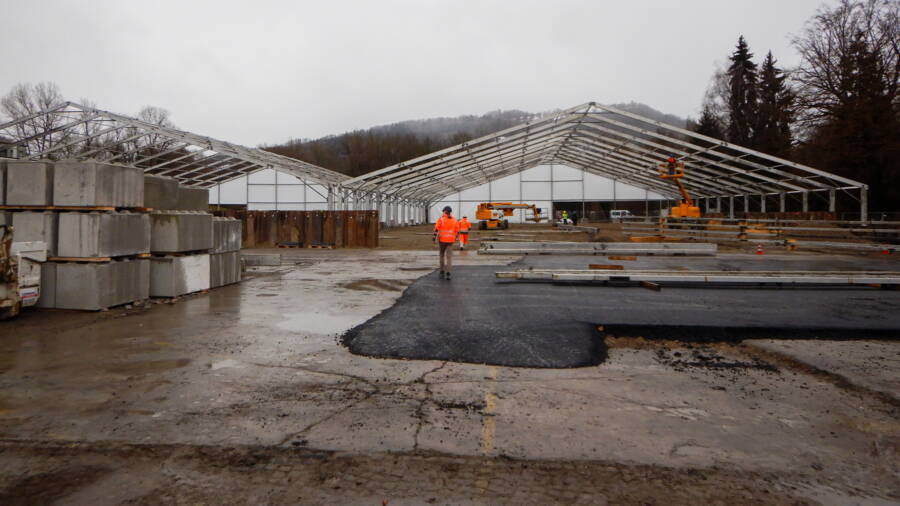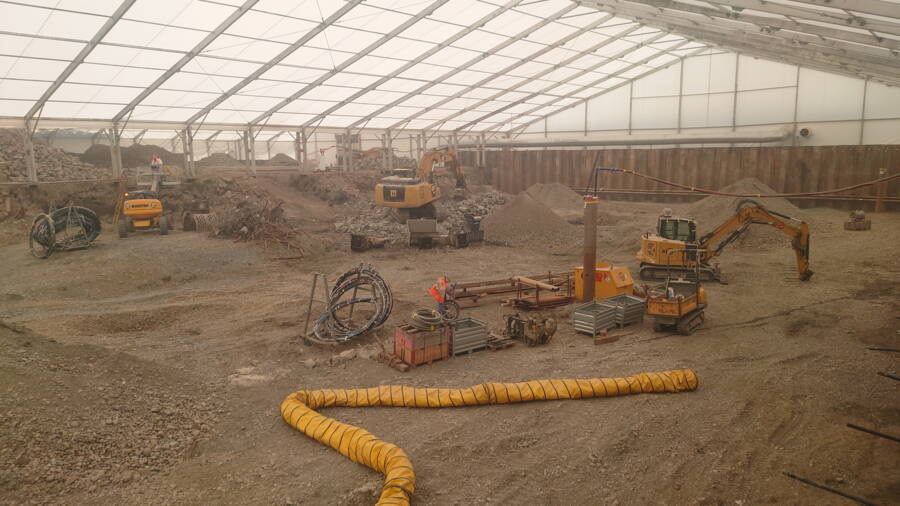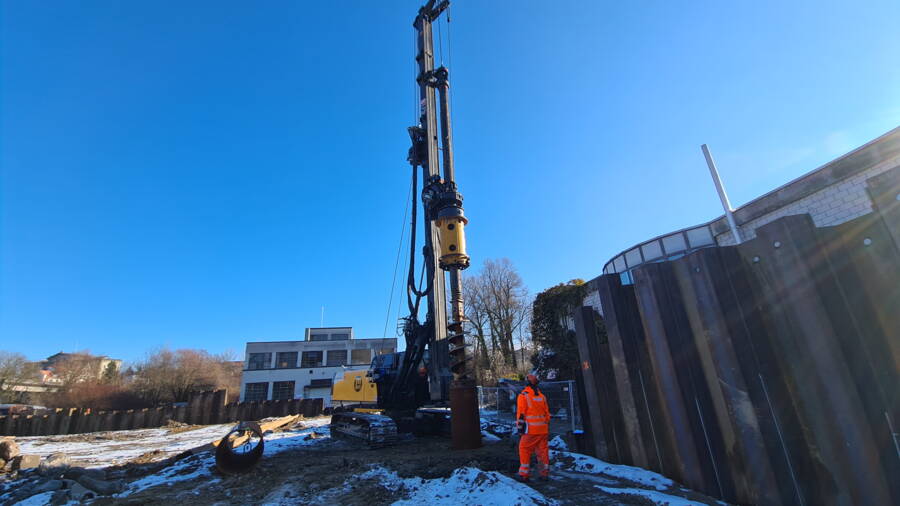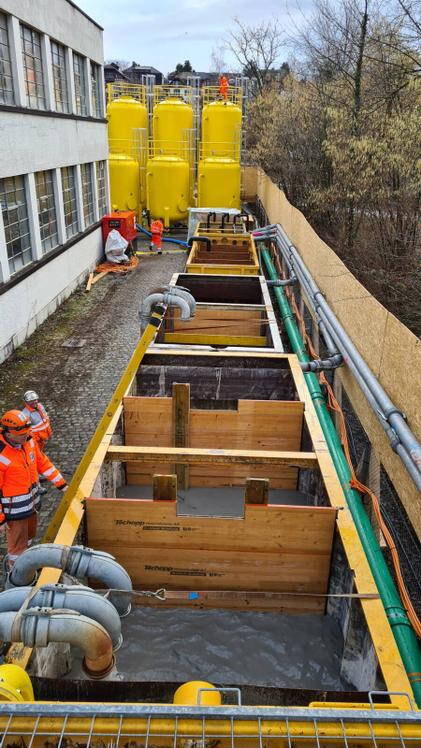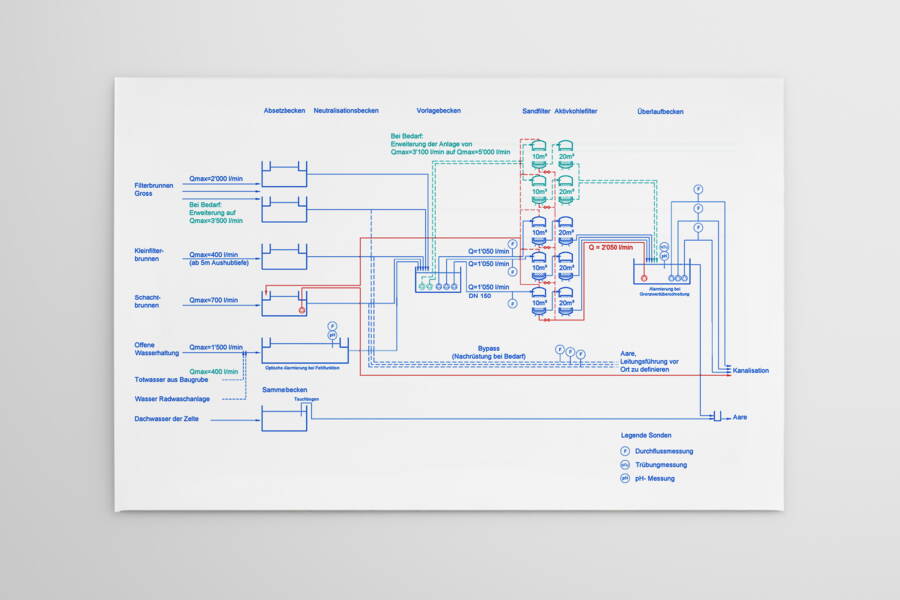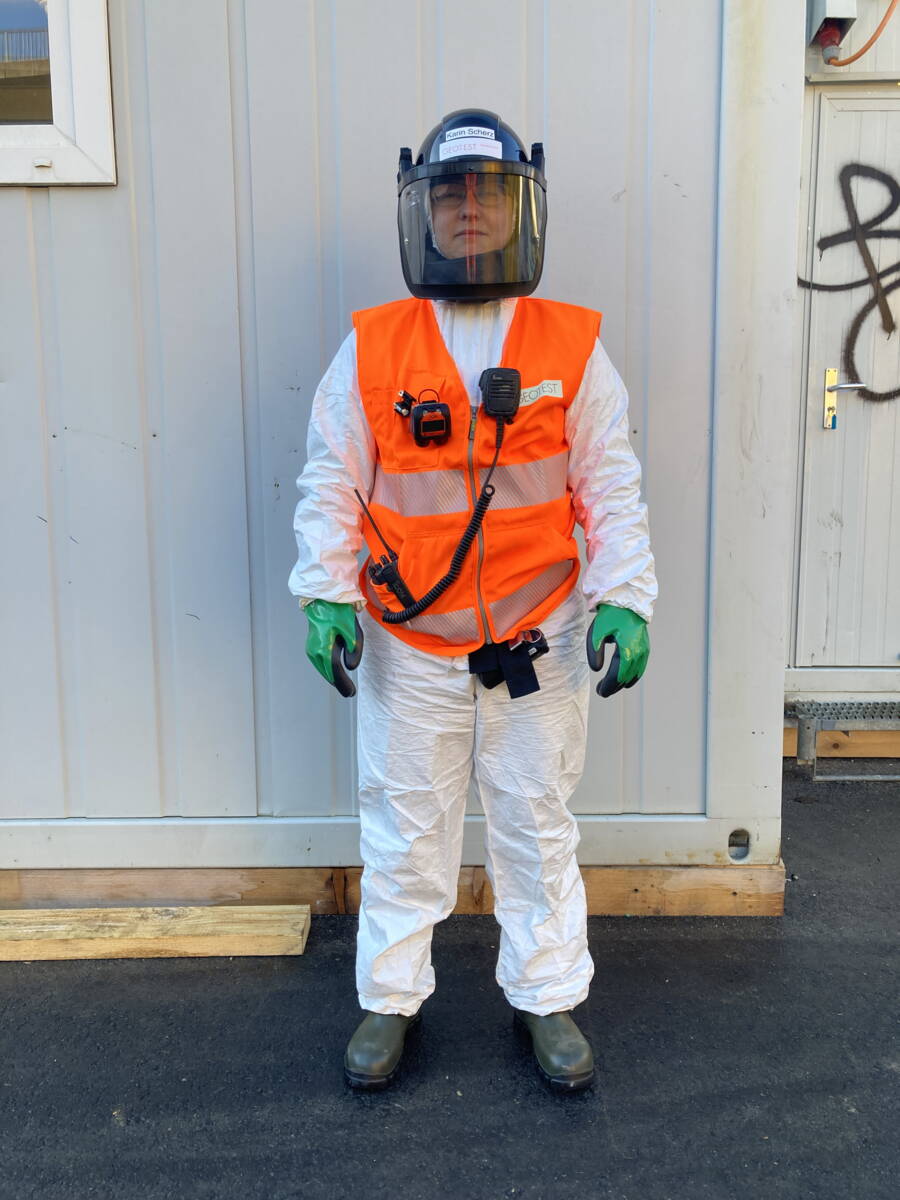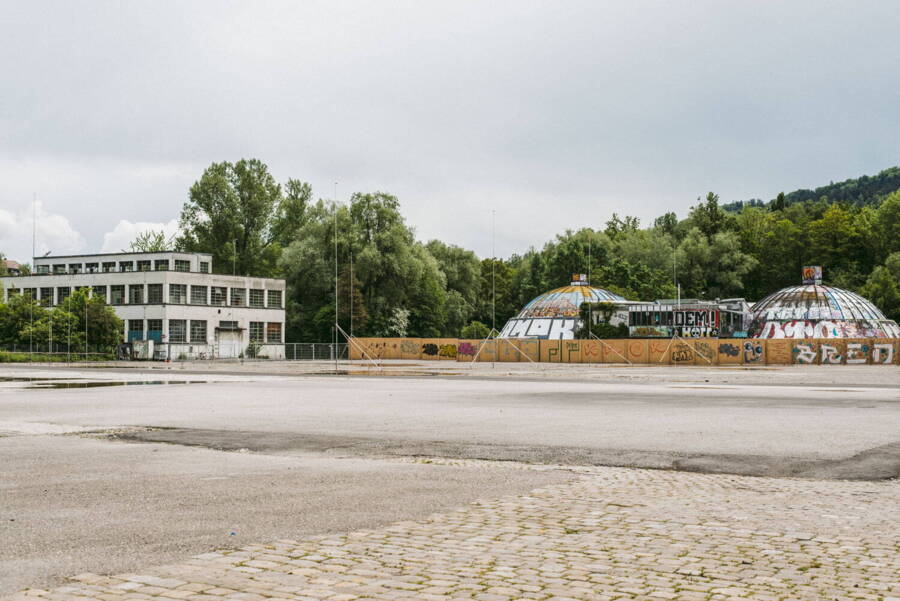Remediation Sandrain (Gasworks)
Sandrain, Bern
46° 56′ 19.83″ N 7° 26′ 32.17″ E
2021 - 2024
History
The gasworks in Sandrain began operations in 1876 and produced town gas for over 90 years. Initially, the gas was used to light the streets and alleys of the city center. Later, it was also used for cooking, heating, and powering engines.
In 1967, the city of Bern was connected to the natural gas grid, gas production at the Sandrain site ceased, and the gasworks were gradually shut down. Just one year later, demolition of the factory began. Since then, the area has largely been used as storage space. However, several buildings—such as the Ryff factory, the youth and cultural center Gaskessel, and the director’s villa—still characterize the site today.
Contaminated Site
Various investigations of the Marzili gasworks site have shown that the subsurface in certain areas of the former gasworks is heavily contaminated. In the downstream area, some groundwater contaminant concentrations exceed the threshold values set by the Contaminated Sites Ordinance (CSO) multiple times. As a result, the site is classified as a contaminated site under the CSO and must be remediated.
Objective
According to the remediation order issued by the Office for Water and Waste of the Canton of Bern (AWA), suitable remediation measures should lead to an improvement in groundwater quality downstream of the former gasworks site. To achieve this objective, the remediation project proposed a partial decontamination of the gasworks site.
Based on the known distribution of pollutants, the gasworks perimeter was divided into zones of varying priority. The remediation measure documented here concerns the perimeter classified as Priority 1. A complete remediation of the entire gasworks site was deemed unnecessary by the AWA, given the level of risk to protected environmental goods.
For the Priority 1 perimeter, the AWA defined the following decontamination targets for solid material in the subsurface in its remediation order:
PAHs (Σ16 individual EPA substances): 25 mg/kg
Benzo(a)pyrene: 3.0 mg/kg
Cyanide (free) in the eluate: 0.02 mg/l
As part of the remediation, all contaminated material within the Priority 1 perimeter exceeding these concentration thresholds had to be removed.
The final building permit for the remediation work was granted in 2020.
The tents are being set up.
Progress of the excavation work in Phase 1.
Project Organization
The engineering consortium INGE Geotest AG (comprising GEOTEST AG, WAM Planer und Ingenieure AG, Theiler Ingenieure AG, and Tensor AG) was commissioned by Energie Wasser Bern to provide engineering services for the planning, tendering, and execution of the contaminated site remediation. Within the consortium, GEOTEST assumed responsibility for construction management and took on overall project leadership.
GEOTEST ensured adherence to schedules, budget compliance, and execution quality in accordance with the highest standards. Acting as the primary point of contact for the client, INGE Geotest managed the construction site and coordinated all necessary measures from a single source. The remediation work was carried out by the ARGE Gaswerk Bern (a joint venture between Marti Infra AG and Marti AG Bern).
Approach
As part of the remediation process, excavation and decontamination work was carefully planned and executed. The organization of the work involved detailed preparation, including identification of all relevant areas such as occupational safety, environmental protection, air quality, surface and groundwater management, followed by implementation of appropriate safety measures.
To minimize emissions (dust, odor), the remediation was conducted under a protective tent. A dedicated on-site treatment facility was set up to process pumped excavation water. Prior to the main remediation activities, extensive investigations were carried out to determine the precise location and depth of the contamination and to define the excavation limits.
Based on the findings, INGE Geotest planned a 7-meter-deep excavation in a geologically challenging environment. The excavation was located in highly permeable gravel directly adjacent to the Aare River, which posed particular challenges in terms of stability, groundwater control, and dewatering. GEOTEST implemented a comprehensive monitoring system to manage groundwater lowering both inside and outside the excavation area, ensuring the safety and efficiency of the construction work.
During excavation, contaminated material was removed step by step and continuously sampled. In areas with deeper residual contamination, targeted replacement drilling was used to remove these materials as well. The collection of bottom samples served to verify that remediation targets had been achieved in the respective areas. Any remaining residual contamination was documented and evaluated, with continuous monitoring to ensure compliance with legal requirements.
The large filter well is being constructed.
Groundwater Management
In parallel with the excavation, groundwater management played a critical role. The remediation concept included a temporary lowering of the groundwater table to allow dry excavation and prevent the spread of contaminants. The extracted groundwater was treated on-site and, depending on compliance with regulatory thresholds, was discharged either into the sewer system or directly into the Aare River.
The quality of the pumped water was continuously monitored, and the pumped volumes were logged. Upon completion of the remediation work, all temporary groundwater control systems were dismantled. The effectiveness of the groundwater lowering and compliance with water protection regulations were assessed at the end of the project.
Material Flows and Disposal Routes
A central component of the remediation was the management of material flows and disposal routes. Excavated material was classified according to its level of contamination and composition, and transported via approved recycling and disposal channels. Comprehensive documentation ensured full traceability of where each batch of material was taken.
In total, 66,455 tonnes of contaminated material were excavated from the Priority 1 area and disposed of or recycled in accordance with legal requirements.
Once remediation targets were achieved, the excavation pit was backfilled according to a defined concept. This involved the use of both material from the remediation process and externally sourced, demonstrably uncontaminated material. The backfilling process was monitored and documented in terms of chemical composition, hydraulic conductivity, and installation quality.
Following backfilling, final activities were carried out, including the removal of temporary installations and the restoration of surface areas.
Thanks to strong teamwork and effective collaboration, we were able to successfully and safely remediate the gasworks site – protecting groundwater, the environment, and people.
Daniel Züger, Project Manager
Groundwater Monitoring
Another key focus was groundwater monitoring. The monitoring concept included regular sampling and analysis of groundwater at the inflow, central, and outflow areas throughout the entire construction phase. The collected data were evaluated and documented with regard to chemical parameters and groundwater levels.
The results showed that the remediation measures had no adverse effects on groundwater quality outside the remediation area. For the post-remediation period, a specification document was created for continued monitoring to track the long-term impact of the remediation measures on groundwater quality.
Schematic diagram of the treatment of construction dewatering water before discharge into the Aare River or the wastewater sewer system.
Environmental Construction Supervision (ECS)
The Environmental Construction Supervision (ECS) was responsible throughout the entire project for monitoring and ensuring compliance with environmental regulations. The ECS concept included regular meetings, site inspections, and close communication with authorities and other stakeholders.
Particular attention was paid to air quality management, with dust measurements and odor controls conducted. In the area of water protection, measures were implemented to prevent contaminants from entering surface waters. Noise and vibration sources were monitored and reduced as necessary through technical and organizational measures.
Traffic monitoring ensured that construction site logistics were environmentally compatible and that prescribed transport routes were adhered to. The ECS results showed that environmental requirements were fully met and no unacceptable impacts on the surrounding area occurred.
Occupational Safety
Occupational safety and health protection were given the highest priority throughout the entire project. Detailed safety and health protection concepts, as well as a monitoring plan, were developed prior to the start of work.
All personnel involved in the construction were trained in health and environmental protection measures outlined in the concepts. Implementation of these measures was supervised and regularly reviewed by specially trained staff. On-site measurements and accompanying biomonitoring confirmed that the protective measures were effective and that no risks existed for the personnel involved in the remediation.
Particular challenges arose from handling chemical contaminants and operating heavy equipment in sometimes confined conditions. Nevertheless, the consistent application of the safety concepts ensured a high level of safety. External audits confirmed the effectiveness of the measures and contributed to the continuous improvement of health protection.
Result
In summary, the remediation work on the former gasworks site in Bern was successfully carried out in compliance with legal and regulatory requirements. The decontamination targets were achieved, the contaminated material was disposed of in accordance with regulations, and the excavation pit was properly backfilled. The original groundwater conditions were restored, and the groundwater quality after remediation meets or exceeds the state prior to the start of the work.
To verify the success of the project, groundwater monitoring will continue over the coming years. The implemented environmental and health protection measures proved effective, ensuring that at no time was there any risk to the environment, third parties, or construction personnel. Documentation of all processes and results guarantees the traceability and transparency of the entire remediation project.
Team Performance
The project team members worked with great dedication and expertise under sometimes challenging conditions on the enclosed site. At the same time, the remediation work was characterized by exemplary collaboration between the client, the ARGE Marti Gaswerk Bern consortium, the aforementioned companies, and the municipal and cantonal authorities. All these partners contributed significantly to the successful achievement of the remediation goals.
Further information:
27.05.2024 | News article: Remediation completed
30.08.2021 | News article: Remediation Sandrain (Gasworks)
Auftraggeber

